Pilots looking for a used aircraft usually have a mission in mind: Carry a specific payload over a certain distance in a minimum amount of time. And if you need to get to and from remote locations while mixing it up at nearby Big City International, you might have overlooked the helicopter. Until the early 1990s, anyone needing a personal helicopter configuredhad to go the turbine route; there were no piston-powered four-passenger helicopters. That changed in late 1992 when the Robinson Helicopter Company obtained FAA certification of its R44, a four-place rotorcraft powered by a Lycoming piston engine. While offerings from Enstrom, Schweizer, Brantley and even the venerable Bell 47 have proven popular, none of them seat more than a pilot and two passengers at most. Robinsons R44, on the other hand, takes the standard two-plus-two seating configuration of the a personal airplane and gives it a vertical takeoff and landing capability. The result is a hugely popular four-seat single-Robinson sold 664 copies of the R44 in 2007-that just happens to have a rotary wing.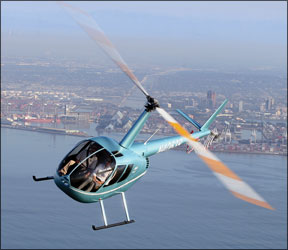
History
Frank Robinsons dream of a small, low-cost helicopter convinced him to resign from the Hughes Helicopter Company in 1973 and found the Robinson Helicopter Company (RHC). The two-place R22 quickly became the worlds top selling civil helicopter and turned Robinson into what many think of as the “Henry Ford of helicopters.”
But the R22 hasnt been without its rough spots. Although RHC didnt intend it to be one of the worlds most popular trainers, thats what it soon became. The R22 was tarnished by a number of accidents and the light-weight rotor system resulted in little inertia, increasing the likelihood of low rotor RPM, blade stalls and fuselage strikes. Also, the rotor design itself, being of the semi-rigid type, where the rotors are free to tilt with respect to the main rotor shaft, allows the blades to see-saw or flap together. Its larger brother, the R44 Raven, didnt come along until 1992, but it inherited some of the R22s DNA, including a heavier but still relatively lightweight semi-rigid main rotor. In the mid-1980s, RHC began developing the four-seat R44 Raven. Its FAA certification was obtained in late 1992, and deliveries began in 1993. By early 2001, more than 1000 R44 helicopters had been delivered
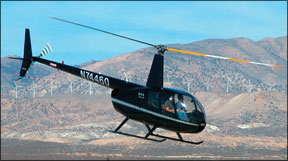
in 50 countries, with the R44 quickly becoming more popular than the R22; RHC manufactured 664 R44s in 2007 but only 159 R22s. Robinson bills the type as delivering “the performance of an expensive turbine helicopter at an affordable piston price.”
Performance
The current R44 Raven comes in two flavors. The Raven I is powered by a carbureted Lycoming O-540-F1B5 engine rated at 225 HP for a five-minute takeoff and 205 HP all other times. The fuel-injected Raven II flies with an IO-540-AE1A5 of 245 HP for five minutes and 205 HP continous.
In addition to upscaling the R22 and tacking on two additional seats, the R44 has a hydraulic flight control system. All R44s share that system, as we’ll as fuselage and rotor components. Both Ravens also are available in RHCs Clipper configuration, which includes fixed floats for over-water operation. When the fixed floats are installed, an 80-knot indicated airspeed never-exceed limitation is imposed.
The R44 Ravens also are available in IFR Trainer trim, which adds an artificial horizon and turn coordinator, along with a marker beacon receiver, to the standard equipment list. Meanwhile, the Raven II can be purchased in three-seat Police Helicopter and Newscopter configurations.
A new R44 Raven I carries a base list price of $320,000; a new Raven IIs pricing starts at $387,000. Paying close to around $5.50 a gallon for 100LL and budgeting realistic amounts for maintenance and the 2200-hour overhaul, direct operating costs of an R44 are in $170 per hour range.
Max gross weight for the Raven I is 2400 pounds; for the Raven II, its 2 500 pounds. The current-production Raven II is billed as weighing 1506 pounds empty, leaving a 994-pound useful load. Standard fuel capacity is 30.6 usable gallons, while auxiliary fuel totals another 18.3 usable.
Cruise speed is billed as no more than 117 knots and its no-reserve maximum range is abour 400 miles, according to RHC. Maximum operating density altitude is 14,000 feet, but the FAA type certificate limits the R44 to no higher than 9000 feet AGL, to allow landing within 5 minutes in case of fire.
Safety
While it helped keep manufacturing costs and gross weight low, that low-inertia rotor system was an early source of problems for the Robinson fleet. Helicopters with semi-rigid rotors are vulnerable to a condition known as mast bumping, which can cause the rotor flap stops to shear the mast, resulting in loss of the main rotor. Mast bumping is normally encountered during low-G maneuvers and is not peculiar to the R22 or R44.
In fact, helicopter engineers maintain any two-bladed helicopter is susceptible to mast bumping, including the ubiquitous Bell UH-1 of Vietnam and its civilian siblings. One of the keys to coping with the combination is avoiding any low-G conditions.
But that solution either wasnt readily apparent to instructors and students or didnt sink in. By 1994, the R22 was the subject of three special certification reviews conducted by the FAA. The R44, the NTSB noted in that year, might have been subject to a “lack of oversight” in the design certification process, which may have contributed to one or more accidents of the still relatively new airframe. As one result of the NTSB recommendation, the R44 was added to the third and final FAA special certification review. In September 1994, the NTSB stated it considered the FAAs reaction to its recommendations acceptable.
In 1995, special federal aviation regulation (SFAR) 73 was issued against the R22 and R44, requiring minimum experience and training in excess of Part 61 requirements before performing pilot-in-command and/or flight instructor duties.
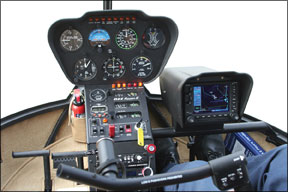
Among other requirements, the SFAR mandates “awareness training” in energy management, mast bumping, low rotor RPM, low-G hazards and rotor RPM decay. An annual flight review in an R22/R44 is required before serving as PIC. Additionally and for transitioning fixed-wing pilots, the SFAR requires a person not holding a rotorcraft category and helicopter class rating to have at least 20 hours of dual instruction in a R44 before soloing it.
By most accounts, the SFAR did what it was designed to do-increase pilot awareness of the R22/R44s design differences when compared to other helicopters-and the accident rate began dropping. Today, SFAR 73 has served as a model for other safety, including a recent review of the Mitsubishi MU-2 series. The FAA recently extended the “temporary” SFAR 73s termination date to June 30, 2009.
One other item involving the R44s safety deserves mention: the T-bar cyclic control. Most helicopters have two cyclic sticks poking up from the floor in front of the pilot seats. The Robinsons have a cyclic coming up from the center of the ship with horizontal arms at the top. If the left side arm is attached (Robinsons are flown from the right seat), either pilot can apply pressure to the cyclic. A downside is that even with the left controls removed, the cyclic is close to a passengers right leg and arm, making him or her much more likely to nudge it accidentally.
Training/Insurance
Fixed-wing pilots have been known to describe learning to hover a helicopter as the aeronautical equivalent of trying to stand on two well-greased bowling balls stacked atop each other. Regardless, you’ll need to obtain at least the minimum training required by SFAR 73 before serving as PIC in your R44. Even though adding on rotorcraft category and helicopter class privileges to your fixed-wing certificates isn’t free, it should be less expensive than starting from scratch.
One training facility with which were familiar suggests budgeting around $17,000 to add on private R44 privileges to an existing fixed-wing certificate. That presumes all rotorcraft time will be in the R44; some cost savings can be found by using the less-expensive R22.
Insurance will be more expensive than for a similar-value airplane. As of 2006, Robinson quoted more than $10,000 annual premium for a liability and hull policy covering a 300-hour-in-type pilot with a good safety record. This price presumes coverage from Pathfinder, a Bahamian company operated by Robinson. Other operators estimate as much as $25,000 annually for coverage from different carriers. Another underwriter specializing in Robinsons is Sutton James, www.suttonjames.com.
Competition
As we noted at the top, the R44 really has no competition from other four-seat piston-powered helicopters. Still, offerings from Bell, Enstrom, Schweizer and
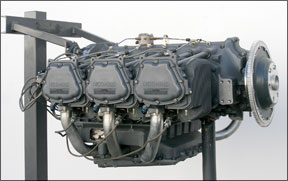
Brantley do compete in the used market. Only the Enstrom and Schweizer remain in production, however, and-except for Bells 47-there simply werent that many of them produced.
Reinforcing the concept that the R44 is really in a class by itself is the fact none of the other piston-powered helicopters can seat four; they only accommodate three and do it by placing everyone on the same bench-style seat. Except for the R44, one must keep climbing the market ladder until reaching the Bell 206 and the Hughes 500-both of which are turbine-powered.
Maintenance/Costs
Operators report that R44s require minimal service between 100-hour inspections and parts are reasonably priced; one likened the pricing to automobile parts. Unlike many other aircraft manufacturers, RHC makes its parts price list available on its Web site. RHC strongly recommends overhauling the engine and major items like gearboxes, rotor blades, bearings and the like at 2200 hours, or 12 years. In fact, the milestone is mandatory for commercial operators. While voluntary for privately operated R44s, its a good idea since, as one operator notes, most of the important parts are largely used up and due for replacement by then, anyway.
Three choices exist to perform the overhaul: Fly the R44 to Robinsons factory where company workers will make it like new on the production assembly line, including its cosmetics; buy an overhaul kit and have a third -party perform the labor; or have your local mechanic do the work using the same overhaul kit.
The list of components in the factory overhaul kits is long; letting the factory do the work means even items not in the kit will be replaced if needed and the ships paint, interior, placards and the like will be brought back to as-new condition.
Robinson breaks costs into three main areas, including a Lycoming factory remanufactured engine at $29,900, the overhaul parts kit at $105,000 and labor (220 man-hours at $60) for $13,200. Grand total, according to Robinsons 2006 estimate of operating costs: $148,100. Figure at least $150,000, which works out to $68.18 per hour for a maintenance reserve, higher if you get to 12 years without reaching 2200 hours. Thats for the basic helicopter, without unscheduled maintenance issues, nor any consideration for avionics.
Figure in fuel at $5.50 and 15 GPH ($82.50), oil and periodic inspections at $12 an hour and you have the basics for determining direct operating costs. Add it all together and it comes to $162.68 hourly operating costs.
One question you might ask would be how does RHC get 2200 hours out of a Lycoming O-540 before overhauling it, when most other applications of this engine reach TBO at either 1800 or 2000 hours? The answer is in the footnotes accompanying Lycomings service instruction setting TBO, which allows an extra 200 hours for the two engine types used in the R44 I and II when “an engine is being used in frequent type service and accumulates 40 hours or more per month, and has been so operated consistently since being placed in service.”
A result of complying with the 2200 hours/12-year overhaul requirement is flying what is basically a brand-new helicopter every time that milestone rolls around. Another is that resale value is maintained-most prospective buyers will want to use the R44 at least some of the time for commercial purposes and will have to comply with the overhaul requirements, anyway. Too, complying with-and documenting-the overhaul and other factory maintenance recommendations eliminates problems when selling your R44. The downside is your wallet is a lot lighter.
Mods/Type Club
The mods available for the R44 make the it better suited for the kind of special mission at which helicopters excel. Examples include external storage pods from New Zealand manufacturer Helipod, a cargo hook system available from various vendors, aftermarket emergency float kits and “bear paws”-flat-plate metal attachments designed to prevent the skids from sinking into soft ground. Also offered by various vendors and STC holders are mods like engine monitors and
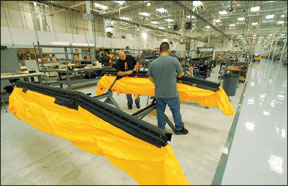
Precise Flights Pulselite system. Available for the carbureted R44 Raven I is an STC allowing automotive gasoline.
Were not aware of a formal type club for the Robinson fleet, but the Robinson Helicopter Owners Group (RHOG) comes close, at www.robinsonhelicopters.org.
Owner Comments
Robinsons R44 is probably the best helicopter in the world for personal ownership; it also might be the best helicopter for primary training. Im heavily involved in R44 ownerships, which are used for transition training/time building and for personal transportation.
When comparing the two models, the Raven II offers another 50 pounds of payload, but most owners use that up with options such as air conditioning and pop-out floats. Baggage is stored underneath the seats. The crushability of the seats is a primary protection in a crash. People have broken their backs in accidents that they might have walked away from if they had simply avoided putting non-crushable items under the seats. If youre going to carry the wheels, for example, keep one under each seat and make sure that the steel handle is flat.
I find the R44 more comfortable than my Cirrus SR20 airplane and more comfortable than the seats in a lot of light airplanes. Heat is ample and uniformly distributed throughout the cabin. The fresh air supply is good, but noisy. We try to use the little vent windows cut into the doors and, if that isn’t enough, removing a door. The noise of the fresh air system is audible over the noise of an open door.
If you put in a control input, the helicopter responds immediately and dramatically. A heavier helicopter responds more gradually. The R44 is like a sports sedan; the big turbine helicopters are like trucks. The piston engine provides instant power changes without the spool-up time of a turbine.
Aside from oil changes, nothing in the R44 requires service between 100-hour inspections. Direct operating costs are approximately $170 per hour.
At 500 hours, our Raven I began to make some ugly noises when we attempted to start it. At the 100-hour inspection, the mechanics found broken teeth on the ring gear (engine side) and on the B&C brand starter. The most likely explanation is that someone tried to start the engine and it failed to catch and then they tried again without waiting long enough for the starter motor to stop spinning.
My Raven I has been virtually trouble- and maintenance-free. Our chief mechanic reports that every part ordered from Robinson has been shipped the same day that it was ordered, a significant contributor to the high availability that we have had during 750 hours of operation. Parts are reasonably priced, similar to what youd expect to pay for car parts.
Unlike other brands of helicopters, the R44 has one big time-in-service limit: 2200 hours or 12 years. When you reach that point, the ship must be overhauled. You can send it back to the factory or you can buy an overhaul kit and have your mechanic do the work. The latter is less expensive, but the ship wont as nice be cosmetically.
Problems with two factory-new R44 Raven I IFR trainers that we purchased involved downtime. One encountered a bird, resulting in a bird fatality and a damaged rotor blade. The flight school sat on the useless helicopter for three months before Robinson was able to deliver a replacement main rotor blade.
During the ferry flight of a 2008 R44 Raven I IFR Trainer earlier this year, the “steam gauge” attitude indicator failed. Robinson wanted us to pull the old attitude indicator from the ship, placard everything inop, fax them the next day to remind them to look at the old one and call them the day after that as an additional reminder. Our flight schools head of maintenance noted, “Any other aircraft company would have overnighted us a new one and taken the old one back.” As a result, we lost weeks of revenue because we couldnt teach any instrument students.
(
We asked RHC about these two issues. The company told us main rotor blades are matched sets and when only one is damaged, it can take time to find a suitable mate. Regarding the attitude indicator, RHC said it needed to inspect the instrument to determine whether to repair or replace it under warranty. – Ed.)The R44s long range and practicality for cross-country trips make the T-bar cyclic perhaps more dangerous than in the R22. On a long trip, people get bored. They start talking. When the non-flying person is talking, he or she is likely to be gesturing, possibly whacking the T-bar or the cyclic tube itself. If the flying pilot doesnt have a firm grip on the controls, there is a possibility of the cyclic being pushed full forward, which might lead to a low-G situation, an improper full left cyclic input, and mast bumping. I have encountered high-time Robinson pilots whove been scared by accidental knocks to the T-bar and who wish the R44 had conventional cyclics.
I fly the R44 while wearing foam earplugs and a noise-cancelling headset. The speakers in a Bose headset cannot handle the full power of an aviation radio. So if you crank up the volume on your radio to hear it through the earplugs, you’ll blow out the speakers in the Bose headsets. Bose headsets, though comfortable, are not very rugged and I have often seen students with the Bose headsets have to jiggle the connectors to establish communication with ATC.
Things on my wish list include a rev limiter to prevent expensive student-induced engine overspeeds, a display of engine power percentage, rather than manifold pressure, a lightweight glass cockpit for instrument training and something to block the overhead sun from heating up the cabin.
So far, the R44 holds its value remarkably well. The asking price for a used ship is hardly different than taking the new price and subtracting the number of hours times a reasonable overhaul reserve of $75 per hour.
Philip Greenspun,
Cambridge, Massachusetts
Editors note: Special thanks to Phil Greenspun for his detailed assistance on this Used Aircraft Guide installment
.




